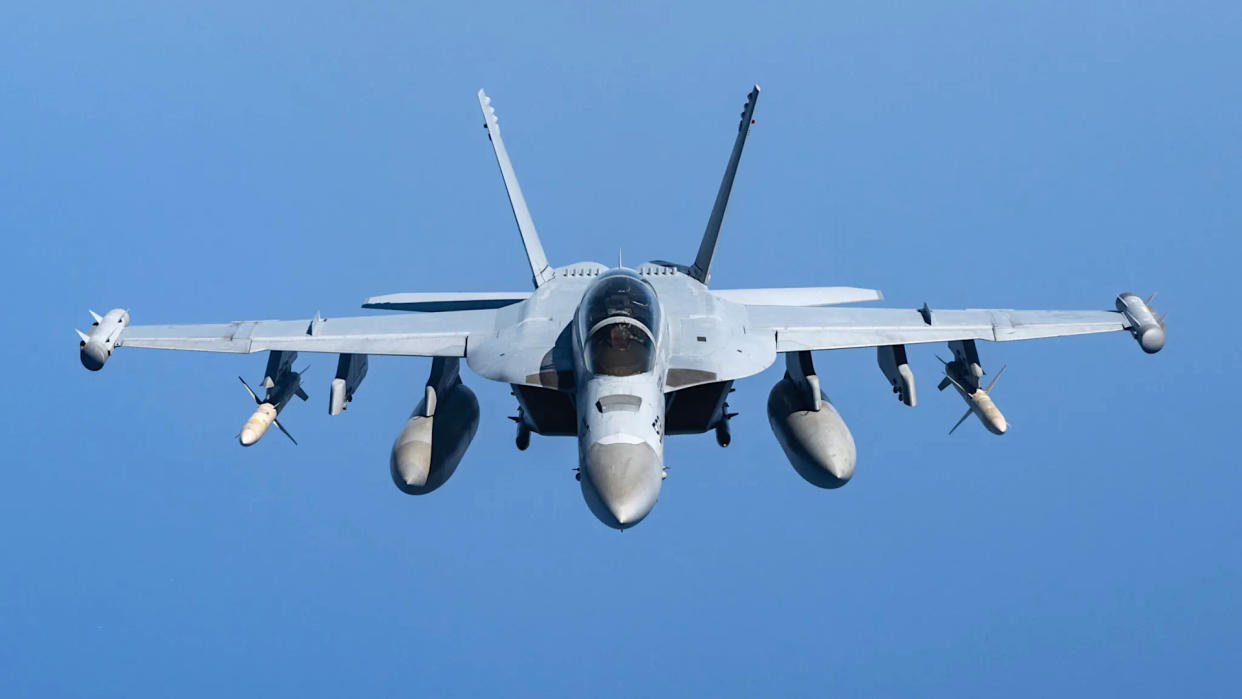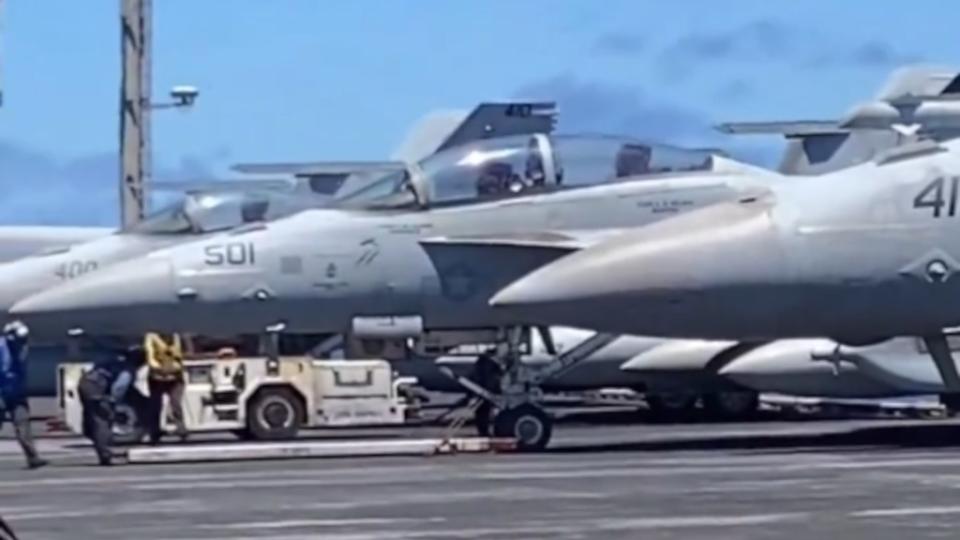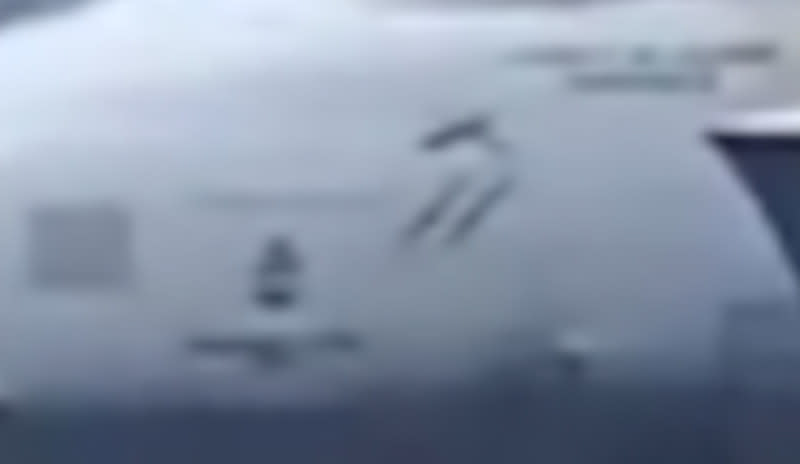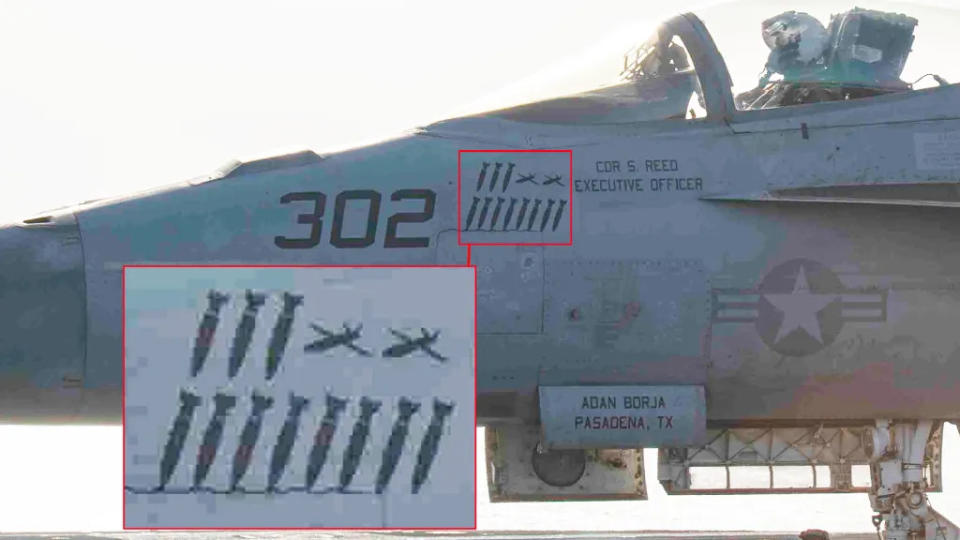EA-18G Growler Scored Its First Air-To-Air Kill

A U.S. Navy EA-18G Growler electronic warfare jet claimed the type’s first air-to-air kill, likely downing a Houthi drone, while deployed with the supercarrier USS Dwight D. Eisenhower, or “Ike.” Ike and the rest of its strike group just recently returned from a historic nine-month-long cruise that saw the expenditure of hundreds of missiles and other munitions against Houthi targets in and around the Red Sea and ashore in Yemen. Growlers from Ike’s air wing also employed AGM-88E Advanced Anti-Radiation Guided Missiles (AARGM) for the first time in combat in the course of those operations, including in a strike that destroyed an Mi-24/35 Hind gunship helicopter on the ground that The War Zone was first to confirm.
Details about the first-ever EA-18G air-to-air victory, which was confirmed in a recent Navy press release, are limited and The War Zone has reached out to the service for more information. The Growlers assigned to Ike’s air wing during its latest deployment came from Electronic Attack Squadron 130 (VAQ-130), the “Zappers,” based at Naval Air Station Whidbey Island in Washington State. The carrier left its home port in Norfolk, Virginia in October of last year and returned there just this past weekend. You can read more about the full exploits of the Ike’s carrier strike group here.
A drone kill marking, as well as two other “victory marks” denoting successful air-to-ground strikes, can be just barely seen on the side of an EA-18G with the modex number 501 in a brief video that Ike’s commanding officer Capt. Chris “Chowdah” posted on social media on July 14.


The full video can be seen below.
It is tradition that aviators affix “victory marks” on aircraft indicating successful engagements against, for example, bombs dropped, missiles launched, drones destroyed, and boats destroyed. pic.twitter.com/lcP2NfzQ4v
— Chowdah Hill (@ChowdahHill) July 14, 2024
Images of F/A-18E/F Super Hornets assigned to Ike’s air wing sporting similar-looking drone and other kill markings had emerged previously.

In terms of what weapon the EA-18G used to score the air-to-air kill, there is currently only one option available to Navy Growlers, the AIM-120 Advanced Medium Range Air-to-Air Missile (AMRAAM). In April, the service disclosed that it had expanded the capacity of its Growlers to carry AMRAAMs as part of a crash effort in response to the ongoing crisis in and around the Red Sea, which The War Zone was first to report. Navy F/A-18E/F Super Hornets can also now carry more AIM-9X Sidewinder air-to-air missiles per sortie as a direct byproduct of the Houthis’ ongoing anti-ship campaign.
The Navy has also supported work to integrate the AIM-9X on the EA-18G, but that currently remains an operational capability exclusive to Growlers in Royal Australian Air Force (RAAF) service.
Beyond the air-to-air kill and the strike on the Hind, VAQ-130’s Growlers flew hundreds of other combat missions during the recent deployment.
“The “Zappers” executed continuous combat operations in the Southern Red Sea, Bab al-Mandeb Strait and Gulf of Aden to maintain the freedom of navigation in international waterways,” according to the recent Navy release. “VAQ-130 conducted seven pre-planned, dedicated strikes into Houthi-controlled Yemen and executed nearly 700 combat missions to degrade the Houthi capability to threaten innocent shipping.”
U.S. Forces, Allies Conduct Joint Strikes in Yemen
As part of ongoing international efforts to respond to increased Houthi destabilizing and illegal activities in the region, on Jan. 22 at approximately 11:59 p.m. (Sanaa / Yemen time), U.S. Central Command forces alongside UK… pic.twitter.com/BQwEKZqMAo— U.S. Central Command (@CENTCOM) January 22, 2024
Since October 2023, the Iranian-backed Houthis have been employing an array of capabilities, including aerial drones, cruise and ballistic missiles, uncrewed surface vessels (USV), and uncrewed undersea vehicles (UUV), sometimes layered together in complex attacks, in their ongoing campaign against foreign warships and commercial vessels in around the Red Sea. The group is the first to have fired an anti-ship ballistic missile in anger. Two commercial vessels have been sunk so far and many more have been damaged.
The Houthis released footage from strikes with unmanned, remote-controlled boats laden with explosives targeting a Greek-owned M/V TUTOR bulk carrier in the Red Sea on June 12.
The attack caused severe damage at the stern and flooding. The vessel is believed to have sunk, UKMTO… pic.twitter.com/kZJFER2s4w— Status-6 (Military & Conflict News) (@Archer83Able) June 19, 2024
The crisis has, in turn, provided the U.S. Navy and the rest of the U.S. military ample opportunities to learn valuable lessons, as well as achieve notable firsts like the Growler’s aerial kill.
“I can’t remember the last time the Navy had a more challenging deployment with a combination of multiple extensions, severely limited opportunities for R&R [rest and recuperation], and true combat …not just for aviators, but the crew of the whole strike group as well, in the most kinetic action at sea since World War II,” Navy Cmdr. Carl Ellsworth, VAQ-130’s commanding officer, said in a statement. “Words can’t do justice to how proud I am of this ‘Zapper’ Team which performed their duty in combat amidst incredibly challenging circumstances for months on end, frequently not knowing what each day would bring. The best of our country is right here at VAQ-130.”
With the carrier USS Theodore Roosevelt and its strike group, including EA-18Gs from the “Rooks” of VAQ-137, now having taken Ike’s place in the Middle East, Growlers may well have more chances to rack up additional air-to-air and air-to-ground victories.
Howard Altman contributed to this story.
Contact the author: joe@twz.com

